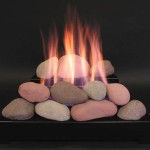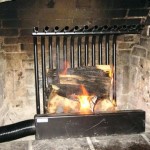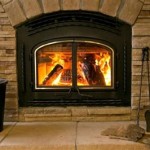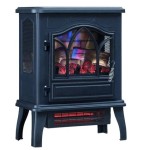Cost To Resurface Fireplace With Stone: A Comprehensive Guide
Resurfacing a fireplace with stone is a popular home renovation project, capable of transforming a dated or unattractive fireplace into a stunning focal point within a living space. The allure of natural stone, with its inherent textures, colors, and durability, makes it an appealing choice for homeowners seeking to enhance the aesthetic and value of their homes. However, before embarking on this project, it is essential to understand the various factors that influence the cost. This article provides a detailed overview of the expenses associated with resurfacing a fireplace with stone, offering insights into materials, labor, preparation, and potential additional costs.
Factors Influencing the Cost of Stone Resurfacing
Several key factors influence the overall cost of resurfacing a fireplace with stone. Understanding these factors is crucial for developing an accurate budget and making informed decisions throughout the project.
Type of Stone: The type of stone selected significantly impacts the material cost. Natural stone varieties such as granite, marble, limestone, slate, and travertine vary considerably in price. Granite and marble are generally more expensive due to their perceived luxury and durability. Limestone and slate offer more cost-effective options while still providing a distinct aesthetic. Cultured stone, also known as manufactured stone veneer, is a more affordable alternative to natural stone. It is made from a blend of cement, aggregates, and pigments, replicating the look and feel of natural stone at a lower price point.
Size and Complexity of the Fireplace: The size of the fireplace and the complexity of the design also play a crucial role in determining the cost. A larger fireplace requires more stone, thus increasing the material expense. Intricate designs, featuring arches, curves, or custom stone cuts, demand more skilled labor and time, which subsequently increases the overall project cost. Fireplaces with existing mantels or decorative elements that need to be removed or modified will also contribute to higher labor costs.
Labor Costs: Labor costs are a substantial component of the total expense. These costs are influenced by several factors, including the geographic location, the experience and expertise of the installer, and the complexity of the installation. Highly skilled masons or tile setters generally charge higher hourly rates than less experienced installers. The complexity of the project, such as the need for custom cuts, intricate patterns, or working around existing structures, also affects the labor time and, consequently, the labor cost.
Preparation Work: Before the stone can be installed, the existing fireplace surface must be properly prepared. This may involve removing existing materials, such as brick, tile, or paint, and cleaning the surface to ensure proper adhesion. In some cases, the existing structure may need to be reinforced or repaired to support the weight of the stone. Extensive preparation work can add significantly to the overall cost.
Additional Costs: In addition to the core material, labor, and preparation costs, there may be additional expenses to consider. These can include permits, design fees, and unexpected repairs. Depending on local regulations, a building permit may be required for fireplace renovations. Design fees may be incurred if you hire a designer to assist with selecting the stone and creating a design plan. Unexpected repairs may be necessary if underlying structural issues are discovered during the preparation phase.
Estimating the Cost of Different Stone Types
To provide a more concrete understanding of the costs involved, let's examine the estimated costs associated with different types of stone.
Natural Stone (Granite, Marble, Limestone, Slate): Natural stone typically ranges from $15 to $50 or more per square foot for the stone itself. The higher end of this range includes premium-grade materials and unique stone varieties. Installation costs for natural stone can range from $10 to $30 per square foot, depending on the complexity of the project and the installer's rates. Therefore, the total cost for natural stone resurfacing can range from $25 to $80 or more per square foot.
Cultured Stone (Manufactured Stone Veneer): Cultured stone is a more affordable option, with material costs ranging from $8 to $15 per square foot. Installation costs for cultured stone are typically lower than for natural stone, ranging from $8 to $15 per square foot. This brings the total cost for cultured stone resurfacing to approximately $16 to $30 per square foot. Cultured stone provides a cost-effective way to achieve a similar aesthetic to natural stone without the high price tag.
Tile: While technically not stone, tile is another popular option for fireplace resurfacing. Tile can vary greatly in price, ranging from a few dollars per square foot for basic ceramic tile to $20 or more per square foot for high-end porcelain or glass tile. Installation costs for tile typically range from $5 to $15 per square foot, depending on the size and complexity of the tile and the installation pattern. Overall, tile can provide a cost-effective and versatile option for fireplace resurfacing.
These cost estimates are approximate and can vary based on specific project details and geographic location. Obtaining quotes from multiple contractors is recommended to obtain a more accurate estimate for your specific project.
Breaking Down the Resurfacing Process and Associated Costs
Understanding the steps involved in resurfacing a fireplace with stone can provide further insight into the associated costs. The process typically involves the following stages:
1. Design and Planning: This stage involves selecting the type of stone, creating a design plan, and obtaining any necessary permits. Design fees, if applicable, can range from a few hundred dollars to several thousand dollars, depending on the scope of the design services. Permit fees vary depending on local regulations.
2. Demolition and Preparation: This stage involves removing the existing fireplace facing, cleaning the surface, and making any necessary repairs or reinforcements. Demolition and preparation costs can range from $200 to $1000 or more, depending on the complexity of the removal process and the extent of any necessary repairs.
3. Stone Installation: This stage involves cutting and installing the stone according to the design plan. This is the most labor-intensive stage and accounts for a significant portion of the overall cost. As mentioned previously, installation costs can range from $8 to $30 per square foot, depending on the type of stone and the complexity of the design.
4. Grouting and Sealing (if applicable): After the stone is installed, the joints between the stones may need to be grouted. Sealing the stone can also help protect it from stains and moisture. Grouting and sealing costs typically range from $1 to $3 per square foot.
5. Cleanup and Finishing: The final stage involves cleaning up the work area and making any necessary finishing touches, such as installing a new mantel or hearth. Cleanup costs are usually included in the overall labor cost.
By understanding each stage of the resurfacing process, homeowners can better anticipate the costs involved and ensure that the project stays within budget.

Fireplace Makeover Process Total Cost In Honor Of Design

Cost To Reface A Fireplace With Stone Veneer N M Restoration

How Much Does A Fireplace Remodel Cost 2024 Data

How Much Does A Fireplace Remodel Cost 2024

Stone Fireplace Design And Remodel

Read This Before Your Stone Fireplace Makeover Understanding Undertones

Refaced Fireplaces Charlotte Nc Santi Designs

Fireplace Refacing So You Want To Bob Vila

Fireplace Reface Contractor Hotline

Fireplace Refacing So You Want To Bob Vila








